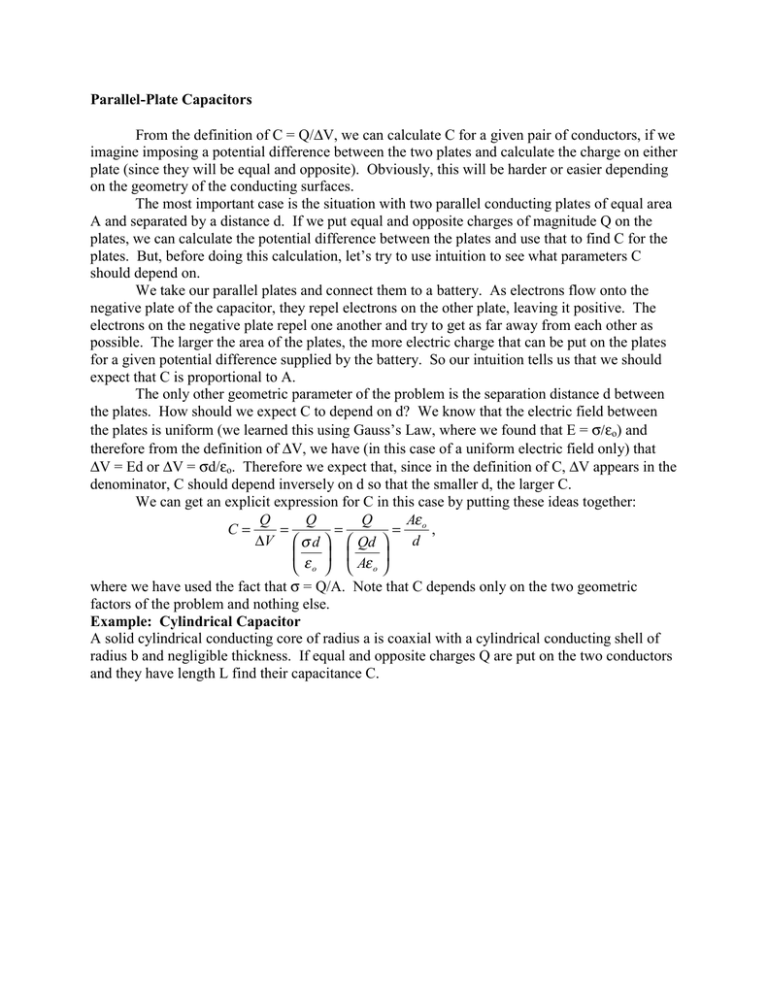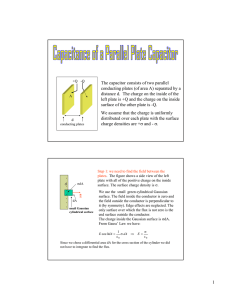∆V, we can calculate C for a given pair of... From the definition of C = Q/
advertisement

Parallel-Plate Capacitors From the definition of C = Q/∆V, we can calculate C for a given pair of conductors, if we imagine imposing a potential difference between the two plates and calculate the charge on either plate (since they will be equal and opposite). Obviously, this will be harder or easier depending on the geometry of the conducting surfaces. The most important case is the situation with two parallel conducting plates of equal area A and separated by a distance d. If we put equal and opposite charges of magnitude Q on the plates, we can calculate the potential difference between the plates and use that to find C for the plates. But, before doing this calculation, let’s try to use intuition to see what parameters C should depend on. We take our parallel plates and connect them to a battery. As electrons flow onto the negative plate of the capacitor, they repel electrons on the other plate, leaving it positive. The electrons on the negative plate repel one another and try to get as far away from each other as possible. The larger the area of the plates, the more electric charge that can be put on the plates for a given potential difference supplied by the battery. So our intuition tells us that we should expect that C is proportional to A. The only other geometric parameter of the problem is the separation distance d between the plates. How should we expect C to depend on d? We know that the electric field between the plates is uniform (we learned this using Gauss’s Law, where we found that E = σ/εo) and therefore from the definition of ∆V, we have (in this case of a uniform electric field only) that ∆V = Ed or ∆V = σd/εo. Therefore we expect that, since in the definition of C, ∆V appears in the denominator, C should depend inversely on d so that the smaller d, the larger C. We can get an explicit expression for C in this case by putting these ideas together: Q Q Q Aε C= = = = o, d ∆V σ d Qd ε o Aε o where we have used the fact that σ = Q/A. Note that C depends only on the two geometric factors of the problem and nothing else. Example: Cylindrical Capacitor A solid cylindrical conducting core of radius a is coaxial with a cylindrical conducting shell of radius b and negligible thickness. If equal and opposite charges Q are put on the two conductors and they have length L find their capacitance C.








